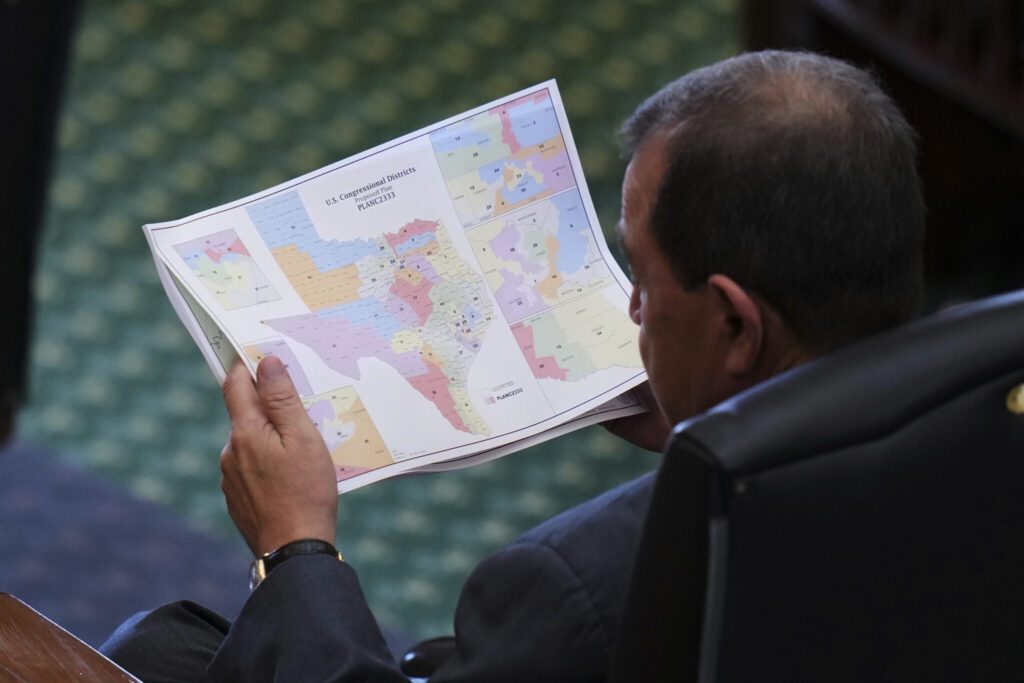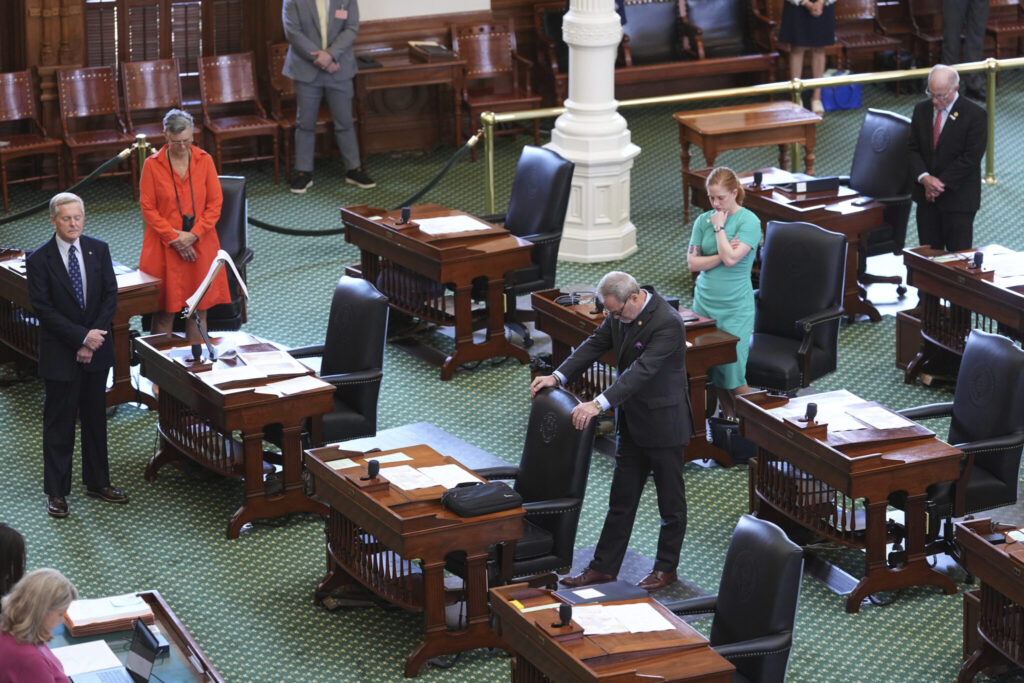Texas OKs GOP-Backed Congressional Map, Awaits Abbott Signature/ Newslooks/ WASHINGTON/ J. Mansour/ Morning Edition/ The Texas Legislature approved a new congressional map that strengthens Republican power heading into the 2026 midterms. Democrats accused GOP leaders of voter suppression and attempted to filibuster, but were blocked before debate. Governor Greg Abbott is expected to sign the measure quickly, as lawsuits loom.


Texas Redistricting Battle: Quick Looks
- Final Vote: Texas Senate passed GOP-drawn congressional map Saturday morning
- Governor’s Role: Greg Abbott expected to sign quickly
- Trump’s Push: Advocated map to protect slim House majority in 2026
- New Districts: Five additional Republican-leaning seats created
- Democratic Resistance: Two-week walkout, attempted filibuster shut down
- Senate Drama: Sen. Carol Alvarado blocked from filibustering after fundraising dispute
- Voting Rights Concerns: Democrats argue map dilutes minority voting power
- California Response: Newsom signs bill for redrawn map favoring Democrats
- Doggett’s Exit: Longtime Texas Democrat says he won’t seek reelection under map
- National Impact: Both parties accelerating redistricting battles before midterms

Deep Look: Texas Lawmakers Approve GOP-Backed Congressional Map Amid Fierce Partisan Clash
AUSTIN, Texas — In the early hours of Saturday morning, the Republican-controlled Texas Senate approved a new congressional voting map designed to solidify GOP control ahead of the 2026 midterm elections. The map, heavily backed by President Donald Trump and Texas Governor Greg Abbott, adds five new Republican-leaning districts and now heads to Abbott’s desk for signing.
Democrats, who waged a two-week walkout and staged hours of debate in an effort to block the measure, condemned the map as unconstitutional and vowed to take the fight to the courts.
A Partisan Power Play
Republicans framed the redistricting effort as essential to protecting their razor-thin House majority. State Sen. Phil King, the bill’s sponsor, bluntly told colleagues:
“There is extreme risk the Republican majority will be lost if this map does not pass.”
King insisted the maps were “legal and better for Republican candidates,” rejecting Democratic claims that the new boundaries dilute minority voting power and violate the Voting Rights Act.
Trump has personally lobbied Texas leaders to redraw maps ahead of the midterms. Similar efforts are now underway in Indiana, Missouri, and Ohio, as GOP strategists push for more winnable seats.
Filibuster Stopped Before It Began
Democrats hoped to mount one last stand in the Senate through a filibuster led by Sen. Carol Alvarado, who announced on social media she was prepared to speak for hours against the bill. But before she could start, Republicans accused her of breaking Senate rules by attempting to raise campaign funds tied to the filibuster.
That maneuver abruptly ended her effort. “Shutting down a filibuster over a fundraising email is unprecedented,” Democratic Sen. Sarah Eckhardt argued, accusing Republicans of hypocrisy while they “raise millions off stealing Texans’ votes.”
National Redistricting War
The Texas showdown highlights a growing national redistricting battle. In California, Democrats passed legislation to redraw their congressional map to net five additional seats. Unlike Texas, California requires voter approval because an independent commission usually handles redistricting.
Governor Gavin Newsom signed the bill Thursday, calling it “a reaction to an assault on our democracy in Texas.”
Abbott dismissed California’s move as “a joke,” predicting courts would overturn it. “Republicans are not finished in the United States,” he declared.
Impact on Texas Delegation
The new map is already shaping the 2026 campaign. Democratic Rep. Lloyd Doggett, the longest-serving member of Texas’ congressional delegation, announced he would not run for reelection under the new boundaries. His Austin-based district would overlap with that of fellow Democrat Rep. Greg Casar, potentially forcing a primary battle.
Democrats argue the map was drawn to dismantle strongholds like Doggett’s while shoring up Republican margins in suburban districts.
A Constitutional Grey Zone
Redistricting typically occurs once per decade after the U.S. Census, but the Supreme Court has left the door open for mid-decade redraws. The Court has ruled that partisan gerrymandering is not unconstitutional, though racial gerrymandering is prohibited.
That ruling has emboldened states like Texas to push for new maps ahead of 2026, while Democratic-led states search for legal pathways to counter with their own redraws.
Both Sides Warn of Fallout
Democrats say the GOP’s aggressive redistricting is a dangerous precedent, but Republicans insist they are simply maximizing opportunities within legal bounds.
California Republican minority leader James Gallagher criticized both parties, warning that Governor Newsom’s “fight fire with fire” approach could spiral out of control.
“You move forward fighting fire with fire, and what happens? You burn it all down,” he said.
Stakes for 2026
Currently, Democrats are within three seats of retaking the House majority. Historically, the party of the sitting president tends to lose seats in the midterms, raising the stakes for both sides.
By reshaping congressional maps in the middle of the decade, Texas Republicans are betting they can secure long-term control of House seats. Democrats, meanwhile, hope the courts will intervene before voters head to the polls in November 2026.
As legal battles loom, one thing is clear: Texas has once again become the epicenter of a redistricting fight with national consequences.







